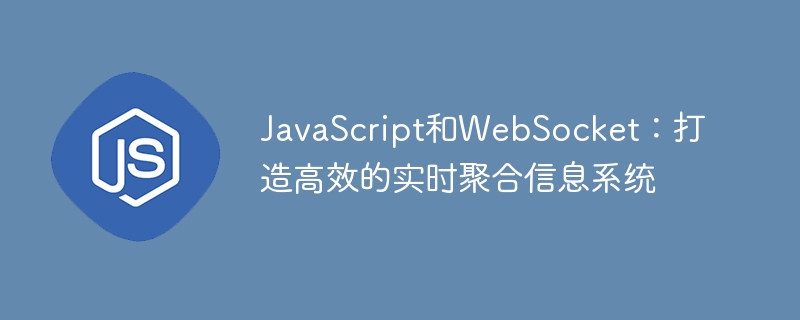

JavaScript and WebSocket: Create an efficient real-time aggregation information system
Abstract: WebSocket is a two-way communication protocol based on the TCP protocol that can be used between the browser and the server. Establish a persistent connection between them to achieve real-time two-way communication. As modern web applications increasingly require real-time and interactivity, the combination of JavaScript and WebSocket can create an efficient real-time aggregation information system. This article will introduce the basic principles, advantages and application of WebSocket in JavaScript, and provide specific code examples.
Introduction:
In the early days of web applications, HTTP was widely used for communication between browsers and servers. However, HTTP is a stateless protocol, which requires the browser to establish a new connection every time it requests, which is not suitable for real-time two-way communication. To solve this problem, WebSocket came into being.
1. Basic principles and advantages of WebSocket
Advantages:
2. WebSocket application in JavaScript
JavaScript provides the WebSocket API to facilitate developers to use WebSocket in the browser for real-time communication. Here are some common scenarios and sample code for using WebSockets in JavaScript:
Connecting to the server
const socket = new WebSocket('ws://localhost:8080'); // 连接服务器
socket.onopen = function() {
console.log('连接服务器成功');
};
socket.onclose = function() {
console.log('与服务器连接断开');
};
socket.onerror = function() {
console.log('连接错误');
};
socket.onmessage = function(event) {
console.log('收到服务器消息:', event.data);
};Sending a message to the server
// 发送字符串
socket.send('Hello, Server!');
// 发送JSON对象
const data = {
name: 'John',
age: 25
};
socket.send(JSON.stringify(data));Receive server message
socket.onmessage = function(event) {
const data = JSON.parse(event.data);
console.log('收到服务器消息:', data.message);
};Disconnect
socket.close();
3. Application scenarios of real-time aggregation information system
Conclusion:
The combination of JavaScript and WebSocket can create an efficient real-time aggregation information system. WebSocket provides real-time, low-latency, two-way communication capabilities and can meet the real-time and interactivity needs of modern Web applications. Through the WebSocket API in JavaScript, developers can easily implement real-time communication in the browser. Proper use of WebSocket can bring a better user experience to users and expand the functionality of applications.
The above is the detailed content of JavaScript and WebSocket: Create an efficient real-time aggregated information system. For more information, please follow other related articles on the PHP Chinese website!
